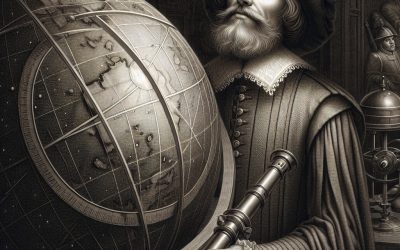Explore the World Through Geography, Natural Resources & Daily History
Clear, reliable and engaging guides that help you understand our planet — from UK geography education to global natural resources and On This Day history events.
Explore, discover, and learn about the wonders of our world! At Earth Site, we’re passionate about bringing geography, history, and science to life for curious minds of all ages. Whether you’re delving into historical events, uncovering the mysteries of the natural world, or seeking interactive resources, you’re in the right place.
Here, you can uncover the stories behind historical events, explore the natural wonders of our planet, and gain valuable insights into how the Earth’s systems shape our daily lives. From the towering peaks of mountain ranges to the far-reaching impacts of human innovation, we aim to make every topic both engaging and informative.
Start your journey of discovery with us today, and let’s make learning an adventure!
What We Cover
Earth Site brings together engaging and accessible educational content designed to help you understand the world, its history, and its natural systems.
🌍 Geography Education (UK & Worldwide)
We publish clear, easy-to-understand geography resources for students, teachers and curious learners. Our guides support geography education in the UK and cover physical geography, climate, ecosystems, population, and global development.
⛏️ Natural Resources & Environmental Geography
Explore detailed country profiles covering natural resources, mining, energy, geology and global environmental challenges. We show how nations manage minerals, water, land and ecosystems, and why these resources matter.
📅 On This Day in History
Every day has a story. Our On This Day history series features major events, anniversaries, traditions, and cultural milestones from around the world — with timelines, context, and fun facts.
TIMELINE
Discovering the Beauty and Culture of South Korea: A British Traveller’s Journey
South Korea, a country known for its rich cultural heritage, vibrant cities, and stunning natural landscapes, has always been on my travel bucket list. Last year, I finally had the opportunity to embark on a journey to this fascinating country. In this blog post, I will share my personal experience of traveling to South Korea and explore the various aspects that make it such a captivating destination. Summary South Korea has a rich cultural heritage that is reflected in its art, architecture, and traditions. The bustling cities of Seoul and Busan offer a vibrant and exciting atmosphere for visitors to explore. South Korea’s natural landscapes are breathtakingly beautiful, with mountains, beaches, and forests to discover. The cuisine of South Korea is delicious and varied, with a focus on fresh ingredients and bold flavors. Traditional Korean tea culture is an important part of the country’s history and is still celebrated today. The Rich Cultural Heritage of South Korea South Korea has a long and storied history that dates back thousands of years. From the ancient kingdoms of Goguryeo, Baekje, and Silla to the more recent Joseon Dynasty, the country’s history is deeply intertwined with its cultural heritage. Traditional customs and practices are still very much alive in South Korea today. One of the most iconic aspects of Korean culture is the hanbok, the traditional Korean clothing. The hanbok is characterized by its vibrant colors and elegant design, and it is often worn during special occasions such as weddings and festivals. Another important aspect of Korean culture is the emphasis on respect for elders and ancestors. This can be seen in...
Discovering the Hidden Gems of Sao Tome and Principe: A Journey to the Enchanting Islands
Sao Tome and Principe is a small island nation located in the Gulf of Guinea, off the western coast of Central Africa. Comprising of two main islands, Sao Tome and Principe, as well as several smaller islets, this hidden gem is often overlooked by travellers in favour of more popular destinations. However, those who do venture to Sao Tome and Principe are rewarded with pristine beaches, lush rainforests, and a rich cultural heritage. The history of Sao Tome and Principe is deeply intertwined with its colonial past. The islands were discovered by Portuguese explorers in the late 15th century and soon became an important hub for the transatlantic slave trade. The legacy of this dark period can still be seen in the country’s culture and architecture. Today, Sao Tome and Principe is a melting pot of African and Portuguese influences, creating a unique blend of traditions, music, dance, and art. Summary Sao Tome and Principe is a lesser-known paradise with rich history and culture. The best time to visit is during the dry season from June to September, with festivals throughout the year. The beaches and coastal landscapes are stunning, with opportunities for diving and wildlife watching. The rainforests are home to unique flora and fauna, including the endemic bird species. Visiting the historic plantations and colonial architecture offers a glimpse into the country’s past. Getting to Know the Rich History and Culture of Sao Tome and Principe The colonial past of Sao Tome and Principe has had a profound impact on the culture of the islands. The Portuguese brought African slaves to work on the sugar...
Discovering the Fascinating World of Xenarthra: The Slow-Moving Sloths, Armoured Armadillos and Unique True Anteaters
Xenarthra is a diverse group of mammals that includes sloths, armadillos, and anteaters. The name “Xenarthra” comes from the Greek words “xenos” meaning strange or different, and “arthron” meaning joint. This name reflects the unique skeletal structure found in these animals, particularly in their vertebrae and pelvic bones. Within the Xenarthra group, there are several different species, each with its own unique characteristics and adaptations. Sloths are known for their slow-moving nature and their ability to hang upside down from trees. Armadillos are known for their armored shells and ability to roll into a ball for protection. Anteaters are known for their long snouts and tongues, which they use to feed on ants and termites. Despite their differences, all Xenarthra species share a common ancestor and are found primarily in the Americas. Summary Xenarthra is a diverse group of mammals found in South and North America. Sloths are slow-moving but highly adapted to life in the canopy. Armadillos are survivors from prehistoric times and have unique armour for protection. True anteaters are specialized insectivores with long snouts and tongues. Xenarthra face threats and conservation efforts are needed to protect them. Slow-Moving Sloths: Masters of Adaptation in the Canopy Sloths are perhaps the most well-known members of the Xenarthra group. They are known for their slow movements and spend most of their lives hanging upside down from trees. This slow lifestyle is due to their low metabolic rate, which allows them to conserve energy. Sloths have several physical adaptations that make them well-suited for life in the trees. They have long limbs with curved claws that allow them to easily...
Exploring the Enigmatic: A Journey Through North Korea
North Korea, officially known as the Democratic People’s Republic of Korea (DPRK), is a country located on the Korean Peninsula in East Asia. It is bordered by China to the north, Russia to the northeast, and South Korea to the south. With a population of approximately 25 million people, North Korea is one of the most secretive and isolated countries in the world. The political system in North Korea is a highly centralized and authoritarian regime. The country is ruled by the Kim dynasty, which has been in power since its establishment in 1948. The current leader is Kim Jong-un, who took over after the death of his father, Kim Jong-il, in 2011. The ruling party in North Korea is the Workers’ Party of Korea, which has a monopoly on political power. North Korea’s isolation and secrecy can be attributed to a combination of factors. Firstly, the country has a strict policy of self-reliance and has limited its interactions with the outside world. This isolationist approach has allowed the regime to maintain control over its population and limit the influence of external forces. Additionally, North Korea’s government tightly controls information flow within the country, making it difficult for citizens to access information from outside sources. Summary North Korea is a mysterious and isolated nation with a fascinating history. Kim Jong-un and his regime are enigmatic and control the narrative through propaganda. Daily life in North Korea is tightly controlled and citizens have limited freedoms. North Korea’s nuclear ambitions and military might pose a threat to international relations. The economic challenges and opportunities of a socialist state are a key...
Uncovering the Genius of Galileo Galilei: Exploring the Life and Legacy of the Father of Modern Science
Galileo Galilei, born on February 15, 1564, in Pisa, Italy, was a renowned astronomer, physicist, mathematician, and philosopher. He is often referred to as the “father of modern science” due to his groundbreaking contributions to the fields of astronomy and physics. Galileo’s work revolutionized our understanding of the universe and laid the foundation for the scientific method that is still used today. Galileo Galilei was born on the 15th of February 1564 in Pisa, Italy. Galileo initially wanted to study medicine at the University of Pisa but he changed his mind and instead studied Mathematics and Philosophy. He became a professor of mathematics at the University of Pisa in 1589 and then a professor of mathematics at the University of Padua working on the mechanics of motion. His observations of Jupiter’s moons showed that Jupiter was the centre of its own system while still being part of ours. This supported Copernicus’ view that Earth was not the centre of everything (a view he had previously believed). He wrote these discoveries in a book ‘Sidereal Messenger’ (Starry Messenger) which was published in 1610. This book made him famous and helped him gain the position of court Mathematician in Florence. Portrait of Galileo Galilei (1636) aged 72 (Public Domain) His fame also brought him into the company of some very popular and influential people. In 1613 at breakfast with the Grand Duchess Christina while discussing the conflict between the Copernican view and the teachings of the Bible Galileo famously said that the Bible teaches how to go to heaven, not how the heavens go. This was the start of some unwanted...
The Importance of Calcium in Maintaining Strong Bones and Teeth
Calcium is an essential mineral that plays a crucial role in maintaining overall health. It is particularly important for the health of our bones and teeth. Calcium makes up a significant portion of our bone structure, providing strength and support. It also plays a vital role in tooth enamel formation, protecting our teeth from decay and damage. Calcium is involved in various physiological processes in the body, including muscle contraction, nerve function, and blood clotting. However, its role in bone and teeth health is particularly significant. Without adequate calcium intake, our bones can become weak and brittle, increasing the risk of fractures and osteoporosis. Similarly, insufficient calcium can lead to tooth decay and dental problems. Summary Calcium is essential for maintaining healthy bones and teeth. Calcium deficiency can lead to a range of health problems, including osteoporosis. Children need adequate calcium intake for proper bone development. Calcium and vitamin D work together to promote bone health. A balanced diet with calcium-rich foods and supplements can help maintain strong bones and teeth. Understanding Calcium Deficiency and its Consequences Calcium deficiency, also known as hypocalcemia, occurs when the body does not have enough calcium to meet its needs. This can happen due to inadequate dietary intake, poor absorption of calcium from the intestines, or excessive loss of calcium through urine or sweat. Symptoms of calcium deficiency can vary depending on the severity of the deficiency. Mild cases may not present with any noticeable symptoms, while severe cases can lead to muscle cramps, numbness or tingling in the fingers and toes, weak and brittle nails, and even seizures. Long-term calcium deficiency can...
Uncovering the Evolutionary Genius of Charles Darwin
Charles Darwin is one of the most influential figures in the history of science. Born on February 12, 1809, in Shrewsbury, England, Darwin’s groundbreaking theories on evolution and natural selection revolutionized the field of biology and natural history. His work laid the foundation for our understanding of the diversity of life on Earth and continues to shape scientific thought to this day. Darwin’s most famous work, “On the Origin of Species,” published in 1859, presented his theory of evolution through natural selection. This theory proposed that species evolve over time through a process of gradual change and adaptation to their environment. It challenged the prevailing belief in the fixity of species and provided a scientific explanation for the diversity of life on Earth. Summary Charles Darwin is a renowned biologist and naturalist who is best known for his theory of evolution. Darwin’s childhood and early life in England shaped his interest in natural history and science. The Voyage of the Beagle was a pivotal moment in Darwin’s life, where he collected specimens and observed the natural world in South America. The Origin of Species was a groundbreaking work that introduced the concept of natural selection and challenged traditional beliefs about the origins of life. The Descent of Man extended Darwin’s theory of evolution to include human beings and their place in the natural world. Darwin’s Childhood and Early Life in England Charles Darwin was born into a wealthy and well-connected family. His father, Robert Darwin, was a successful doctor, while his mother, Susannah Darwin, came from a prominent family of industrialists. Darwin’s upbringing was comfortable and privileged, allowing him...
The Last Emperor of China: Aisin-Gioro Puyi
In the tumultuous history of China, there was one individual whose life encapsulated the rise and fall of an empire. Aisin-Gioro Puyi, the last emperor of China, navigated a treacherous political landscape and experienced firsthand the dramatic changes that swept his nation. This article will delve into the life of Aisin-Gioro Puyi, exploring his role as the final emperor, his journey of transformation, and the legacy he left behind. The Last Emperor of China – Who was Aisin-Gioro Puyi? Aisin-Gioro Puyi was born in 1906, and at the tender age of two, he ascended the Dragon Throne as the Qing Dynasty’s final emperor. As a young child, he held a symbolic position of power, while real decisions were made by a regency council. However, the winds of change were brewing, and the imperial rule faced increasing challenges from revolutionary forces. The Rise of Revolution A century of imperial rule was met with growing discontent as societal and political changes swept across China. The desire for modernization and democracy ignited a series of uprisings against the monarchy. In 1911, the Xinhai Revolution led to the overthrow of the Qing Dynasty, marking the end of more than two thousand years of imperial rule. A Transformed Emperor Overnight, Aisin-Gioro Puyi’s life was upended. He was forced to abdicate the throne, and the Imperial Palace in Beijing became a museum, no longer serving as the seat of power. Puyi was thrust into a world he was ill-prepared for, as he was taken captive by warlord Zhang Xun and later placed under the control of Japanese forces during the turbulent Warlord Era. The Puppet...
Venera 1: A Milestone in Venus Exploration
Introduction Venera 1, a Soviet spacecraft, holds a significant place in the history of space exploration. Launched on February 12, 1961, Venera 1 attempted the first ‘flyby’ of Venus, marking a groundbreaking milestone in our understanding of our neighboring planet. In this article, we will delve into the mission of Venera 1, the challenges it faced, and the valuable insights it provided about Venus. Venera 1’s Mission: To Explore Venus Venera 1’s primary mission was to gather data on Venus by performing a flyby. Equipped with scientific instruments, the spacecraft aimed to study the atmosphere, magnetic field, and cosmic radiation surrounding the planet. This ambitious undertaking raised hopes for a substantial leap forward in Venus exploration. The Journey of Venera 1 Venera 1 embarked on its journey towards Venus with great anticipation. However, the mission encountered multiple challenges along the way. Despite these obstacles, Venera 1 bravely headed towards its destination, demonstrating the courage and determination of the scientific community. The Challenges Faced by Venera 1 Communication Breakdowns: During the mission, the spacecraft faced difficulties in maintaining communication with Earth, hampering the flow of scientific data. These communication breakdowns posed a significant obstacle to the success of the mission. Navigational Issues: Venera 1 struggled to accurately navigate its path towards Venus due to limited knowledge of the planet’s gravitational field and atmospheric conditions. These navigational challenges further complicated the mission. Venera 1’s Encounter with Venus: What We Found Despite the difficulties encountered, Venera 1 successfully approached Venus on May 19, 1961. However, it did not achieve the intended flyby. Instead, the spacecraft passed within approximately 100,000 kilometers of Venus...
Discovering the Hidden Gem of Europe: Exploring the Wonders of San Marino
Nestled in the heart of Italy, San Marino is a small but enchanting country that often goes unnoticed by travelers. With a population of just over 33,000, it is one of the smallest countries in the world. Despite its size, San Marino boasts a rich history, stunning landscapes, and a vibrant culture that make it a hidden gem in Europe. San Marino is known for its picturesque landscapes, charming medieval towns, and breathtaking views. It is a land of contrasts, where ancient traditions blend seamlessly with modern amenities. Whether you’re a history buff, an outdoor enthusiast, or a food lover, San Marino has something to offer everyone. Summary San Marino is Europe’s best-kept secret, offering a unique blend of history, culture, and natural beauty. The country’s rich heritage is evident in its captivating landscapes and stunning architectural marvels. Visitors can indulge in delicious cuisine and experience vibrant festivals and events. Shopping for unique treasures and embarking on outdoor adventures are also popular activities. Planning ahead and taking advantage of local recommendations can ensure a memorable trip to San Marino. History and Culture: Uncovering the Rich Heritage of San Marino San Marino’s history dates back to the 4th century AD when a Christian stonemason named Marinus fled from the persecution of Emperor Diocletian and sought refuge on Mount Titano. Marinus established a small community that eventually grew into the Republic of San Marino, making it one of the oldest surviving sovereign states in the world. Today, visitors can explore the historical landmarks and museums that showcase San Marino’s rich heritage. The Three Towers of San Marino, including Guaita, Cesta, and...
Discovering the Hidden Gem of Kiribati: A Journey Through the Pacific Islands
Nestled in the heart of the Pacific Ocean, Kiribati is a hidden gem waiting to be discovered. Comprising 33 coral atolls and islands, this remote nation is known for its pristine beaches, crystal-clear waters, and vibrant culture. Kiribati is located in the central Pacific, straddling the equator and the International Date Line. Its unique geography makes it one of the few places in the world where you can stand with one foot in today and the other in tomorrow. The culture and traditions of Kiribati are as captivating as its natural beauty. The people of Kiribati have a deep connection to their land and sea, and their way of life is deeply rooted in their ancestral heritage. From traditional dances and music to storytelling and oral traditions, Kiribati’s culture is rich and diverse. The people of Kiribati are warm and welcoming, always ready to share their traditions with visitors. Summary Kiribati is a stunningly beautiful destination in the Pacific Islands. The country is full of contrasts and diversity, from its history to its natural wonders. Visitors can explore the fascinating history and unique culture of Kiribati. The country is home to spectacular natural wonders and wildlife, perfect for adventure seekers. Visitors can enjoy warm hospitality and delicious cuisine while staying in Kiribati. Kiribati: A Land of Contrasts and Diversity Kiribati is made up of three main island groups: the Gilbert Islands, the Phoenix Islands, and the Line Islands. Each group has its own unique characteristics and attractions. The Gilbert Islands are the most populous and developed, with the capital city of Tarawa located here. The Phoenix Islands are a...
Discover the Untouched Beauty of Samoa: A Journey Through the Pacific’s Hidden Gem
Located in the heart of the South Pacific, Samoa is a hidden gem that often gets overlooked by travelers. This small island nation is made up of two main islands, Upolu and Savai’i, and is known for its stunning natural beauty, rich cultural heritage, and warm hospitality. With its pristine beaches, lush rainforests, traditional villages, and unique cuisine, Samoa offers a truly unforgettable travel experience. Samoa has a fascinating history that dates back thousands of years. The islands were first settled by Polynesians around 3,000 years ago and have since been influenced by various cultures, including European explorers and missionaries. Today, Samoa is an independent country with a proud cultural heritage that is deeply rooted in its traditional way of life. Summary Samoa is a hidden gem in the Pacific, offering natural wonders, cultural riches, unique cuisine, adventure activities, and off-the-beaten-path destinations. Pristine beaches and lush rainforests are among the natural wonders of Samoa, providing opportunities for relaxation and exploration. Traditional villages and ancient traditions showcase the cultural riches of Samoa, offering a glimpse into the country’s unique heritage. Samoa’s cuisine is a blend of local flavours and international influences, with fresh seafood and tropical fruits being among the highlights. Surfing, hiking, and other adventure activities are popular in Samoa, providing opportunities for adrenaline seekers and nature lovers alike. The Natural Wonders of Samoa: Pristine Beaches and Lush Rainforests One of the main attractions of Samoa is its breathtaking beaches. With crystal-clear turquoise waters and powdery white sand, these beaches are like something out of a postcard. Whether you’re looking to relax on the beach or go snorkeling in...











